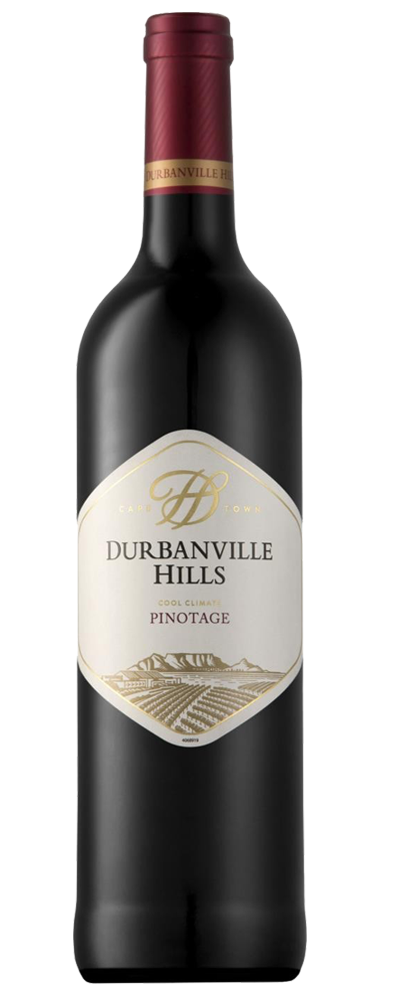2017 PINOTAGE

DURBANVILLE HILLS
(2017 PINOTAGE)
BACKGROUND
Nine leading vineyard owners in the Durbanville district joined forces with Distell to create Durbanville Hills with the aim of promoting the regional individuality of this prime wine-growing area. The striking Durbanville Hills cellar sits proudly atop a series of rolling hills with magnificent views of Table Mountain and Table Bay – the very geography that lies at the heart of what makes the wines so unique.
The Durbanville ward is considered one of the Cape’s coolest wine regions, thanks to the sea breezes that drift inland from False Bay and Table Bay and the late afternoon mists that bathe the slopes. These conditions are ideal for the slow ripening of the grapes, allowing them to develop their full flavoured and intense character. Grapes are sourced only from the shareholder growers, all of whom farm within the limited appellation of Durbanville. Meticulous canopy management promotes concentration of varietal flavour and colour.
Cellar Master Martin Moore uses highly advanced cellar technology to ensure optimal extraction of colour and flavour. Sustainable practices includes the maintaining of the International Environmental Standard ISO140001, treating of waste water back to irrigation quality and all vineyards subscribing to IPW (Integrated Production of Wine) growing practices, designed to sustain natural resources. In addition the farmers protect 320ha of endangered Renosterveld.
THE VINEYARDS (VINEYARD CONSULTANT: DRIKUS HEYNS)
A selection of different Pinotage blocks throughout the Durbanville wine valley was selected for this wine, demonstrating the rich diversity in the landscape of the area. The grapes were picked by hand during mid-February and mid-March at sugar levels between 24° and 26° Balling. Great care was taken to ensure that the pips and skins were fully ripe.
THE VINEYARDS (VINEYARD CONSULTANT: DRIKUS HEYNS)
A selection of different Pinotage blocks throughout the Durbanville wine valley was selected for this wine, demonstrating the rich diversity in the landscape of the area. The grapes were picked by hand during mid-February and mid-March at sugar levels between 24° and 26° Balling. Great care was taken to ensure that the pips and skins were fully ripe.
THE WINEMAKING
We approach the making of our Pinotage with the greatest care, gently handling the grapes with the utmost tenderness. The must was fermented on the skins in closed stainless steel tanks until almost dry (50g per litre of sugar left). At this stage the wine and skins were separated to allow fermentation to finish in stainless steel tanks.
Maximum fruit, colour and tannin extraction from the skins was made possible through continuous timer-regulated pump-over cycles. After malolactic fermentation, the wine was oak matured for 12 months using predominantly French oak, utilising a small percentage of new oak together with older wood as well as wood alternatives. This is done to prevent over wooding and by doing so preserving the elegance of our cool climate fruit.